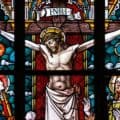Easter Sunday, also known as Pascha in Latin and Greek or Resurrection Sunday in English, is a Christian festival and holiday, which celebrates the resurrection of Lord Jesus. On the third day after being killed by the members of the church, Jesus rose from his grave again to purge the world from evil. The earliest observance of the celebration of Easter was seen in the 2nd century. However, the commemoration of the resurrection of Jesus occurred many years earlier.
Most Christians, especially the Catholics, consider the week before the Easter Sunday to be the Holy Week. It consists of various special and sacred days of the Easter Triduum, such as Good Friday, Maundy Thursday, etc. The arrival of Easter Sunday denotes the beginning of the Eastertide, which is also known as Easter Season.
However, Easter and the other holidays, which are related to it, are known as Movable Feasts. Therefore, they do not usually fall on a fixed date in both Julian and the Gregorian calendar. To symbolize this day, many Christians use the reference of an egg, which is known to be a symbol of fertility.
A Brief Information About the Etymology of Easter
The English term Easter, along with the German ‘Ostern’ and Dutch ‘Ooster’, originated from an Old English term that spells as either ‘Eastrun’ or ‘Eostre’. An English Benedictine monk, known as Bede, was the only person who provides information on the etymology of this word in his book Reckoning of Time.
However, in Greek or Latin, this holy Christian celebration is still known as Pascha. It derived from an Aramaic word, known as Paskha, and a Hebrew term, Pesach. The word, Pascha, also denotes a Jewish festival, which, in English, is known as Passover. It celebrates the Exodus of Jewish slaves from the slavery of the Egyptian kingdom.
What is the History of the First Easter?
There are various things and events happened on the first Easter. On the morning of the first Easter, the women, who were close to Lord Jesus, went to his tomb to show respect to his body and his soul. However, upon reaching, they did not see anything else but some angels who were talking with each other. The angels told them that Jesus’ body was not there and had been moved to somewhere else by someone. After listening to this, the women became quite awe-struck and decided to tell the apostles about it. However, unfortunately, most of them did not believe them.
Nevertheless, one of the most beloved and trusted disciples of Jesus, Peter, believed them entirely. So, he partnered with another apostle and rushed to the tomb to see if it is true or not. But, upon reaching, they, too, found it completely empty. However, in the next moment, Mary, another disciple of Jesus, was the first one to see Jesus rising from another grave. After Mary, Peter saw it too. Upon witnessing this unbelievable incident, both of them rushed again to the disciples to tell about this extraordinary tale. After a few moments, all of them saw that Jesus was actually walking beside the forest.
Jesus has, indeed, risen from the dead after two days!
Origin of the Easter Bunny
The word, ‘Eostre’, which has been mentioned before, derived from the name of the German goddess of fertility and spring, Eostre. After the ending of winter, the German would always honor the goddess and her companion, the hare. This hare of Eostre is known as the Easter Bunny. The goddess had also given the hare a blessing to lay eggs once every year. The legacy of Easter Eggs started from this incident.
Traditions of Easter in Europe
The traditions of Easter generally vary geographically. Different countries in the world generally tend to celebrate this day differently. Here is what everyone should know about these celebrations.
Slovakia and the Czech Republic
According to the tradition of the Czech Republic and Slovakia, the men of these countries use the specially-made whip on the women on the day of Easter. However, with the whip, they do not intend to harm the other. They use these to keep their wives and daughters beautiful and healthy in the upcoming years.
Denmark, Finland, and Sweden
The people of Denmark, Sweden, and Finland, celebrate the day of Easter even more uniquely, almost like Halloween. During this day, the women of these countries dress as witches for fun. On the other hand, the children, here, go from one door to another and bless the houses and its members with willow branches. However, the blessings do not come for free. The blessed people have to repay the children with sweets and money.
Germany
In the country of Germany, the people hang decorated eggs from the trees and make them look almost like Christmas. Besides that, they also decorate the wells to honor, which symbolizes the beauty of spring. The Germans almost celebrate this day just like Christmas day.
Bulgaria
On the day before Easter, the peoples of Bulgaria generally boil the eggs and paint them with vibrant colors. After that, they would start bashing all the eggs together and keep smashing them until only one egg remains un-cracked. According to their traditions, the egg will bring good luck to the family. They usually keep the egg until next Easter.
Poland
The people in Poland generally follow the same traditions as Britain. However, their Easter meals are quite different than the other countries. On this day, they generally make a meal, which is almost entirely made of butter. The whole meal almost looks like a lamb. After they have made the dish, then they start to eat it from behind, keeping the head for the last.
Norway
Easter in Norway is known as Paskekrim, which literally translates to Easter Crime. Therefore, as one can already understand from the name, the Norwegians, on this day, watch crime TV shows and movies. Besides that, those people who love reading also buy crime books and read them throughout the whole day.


